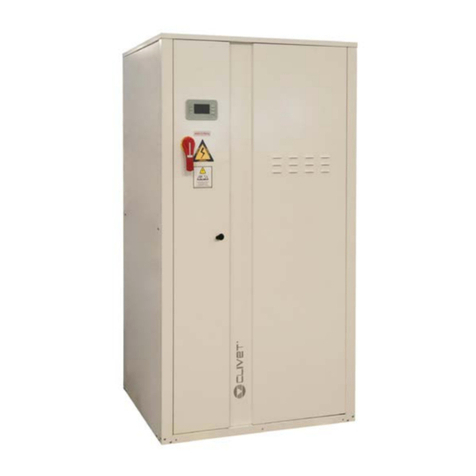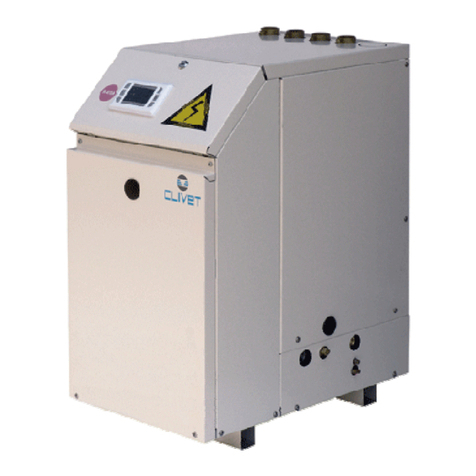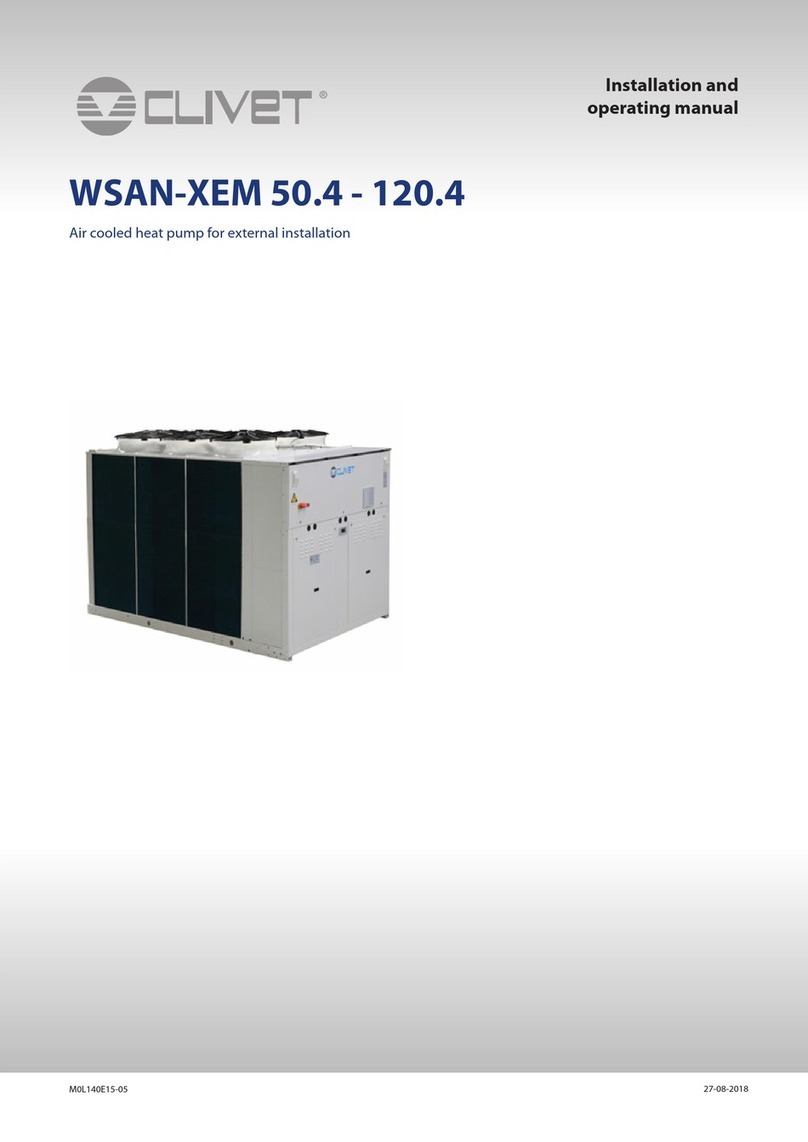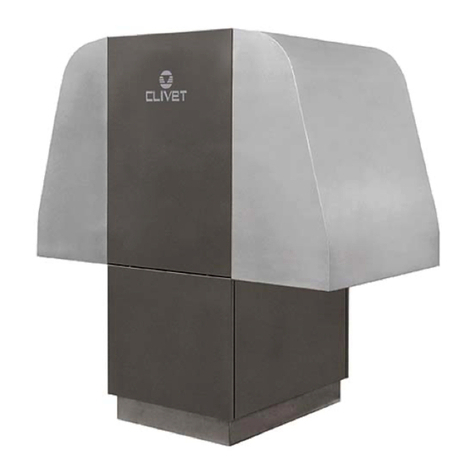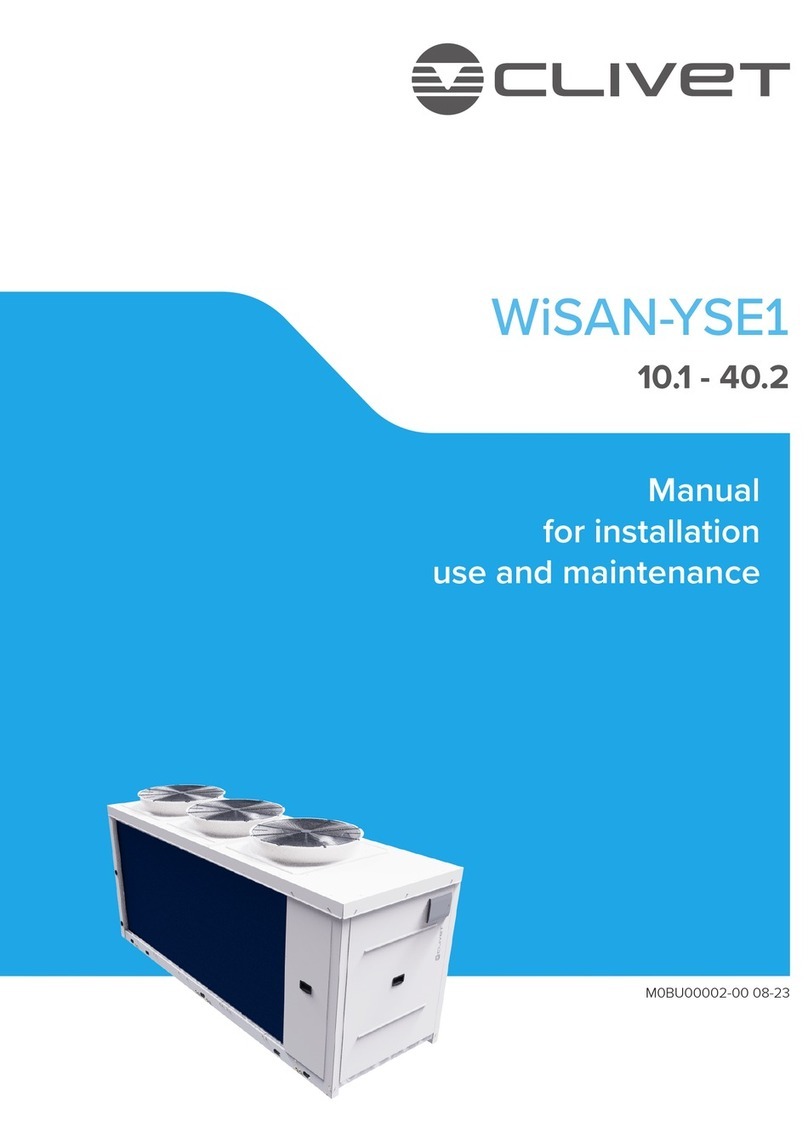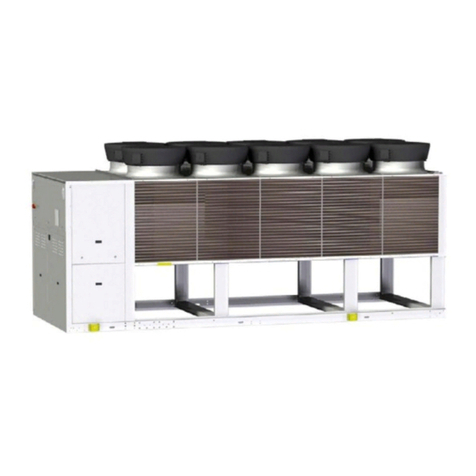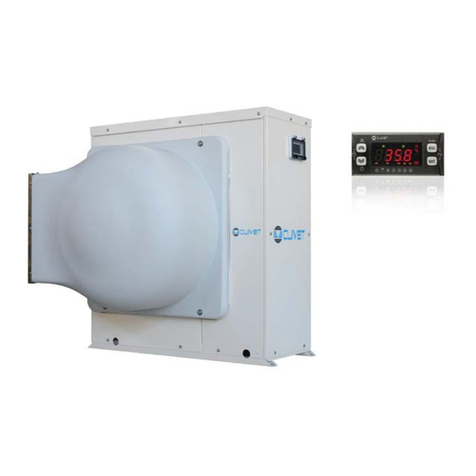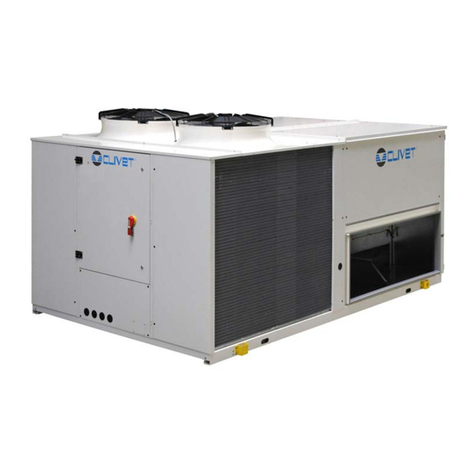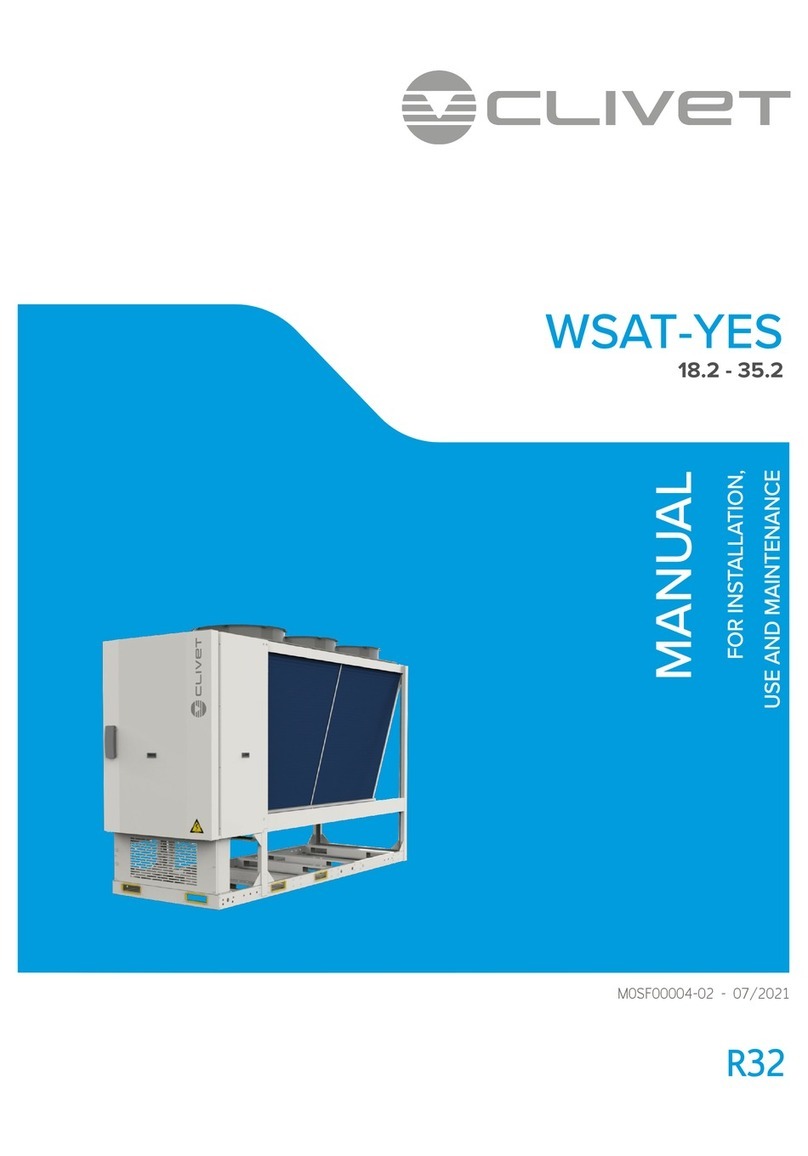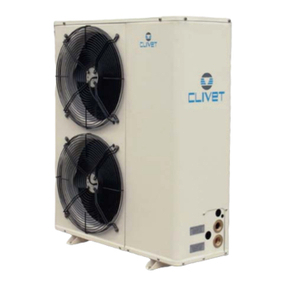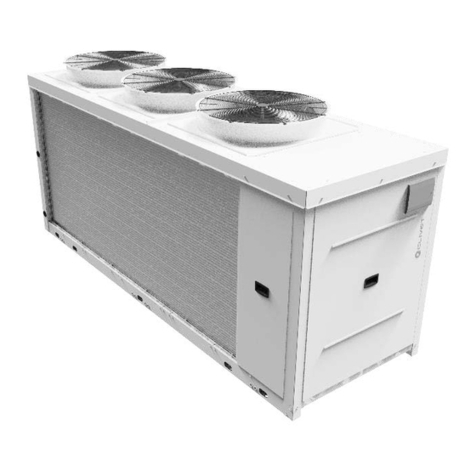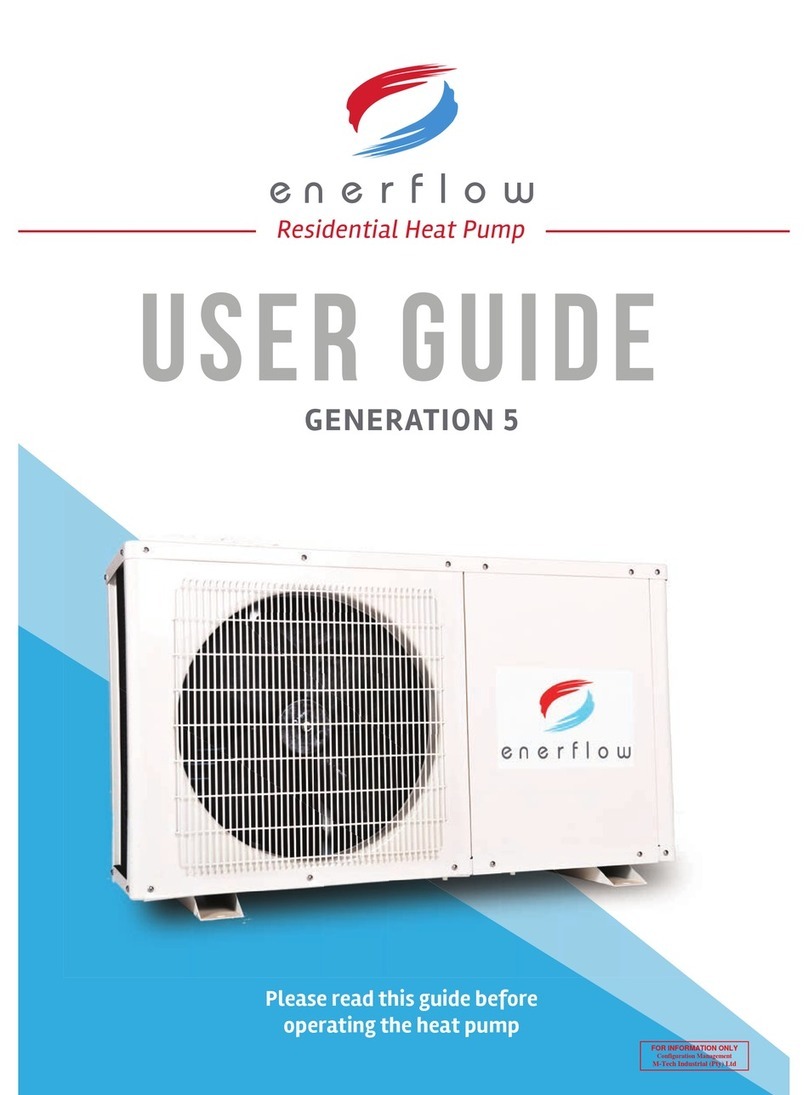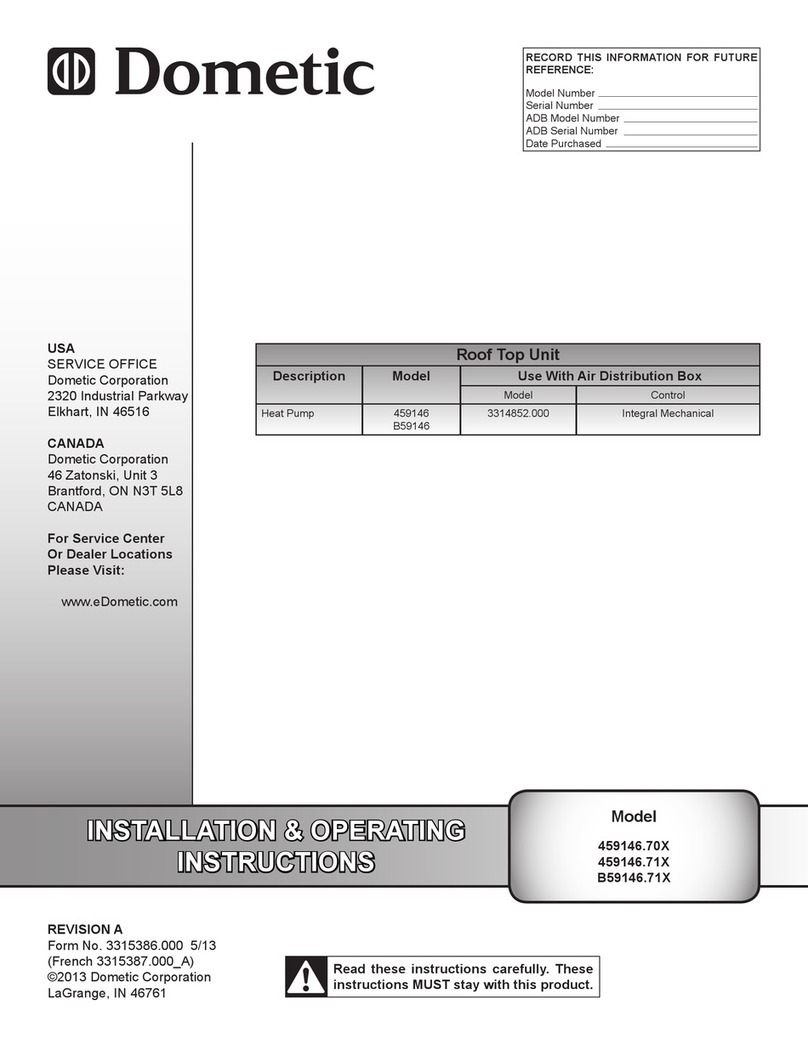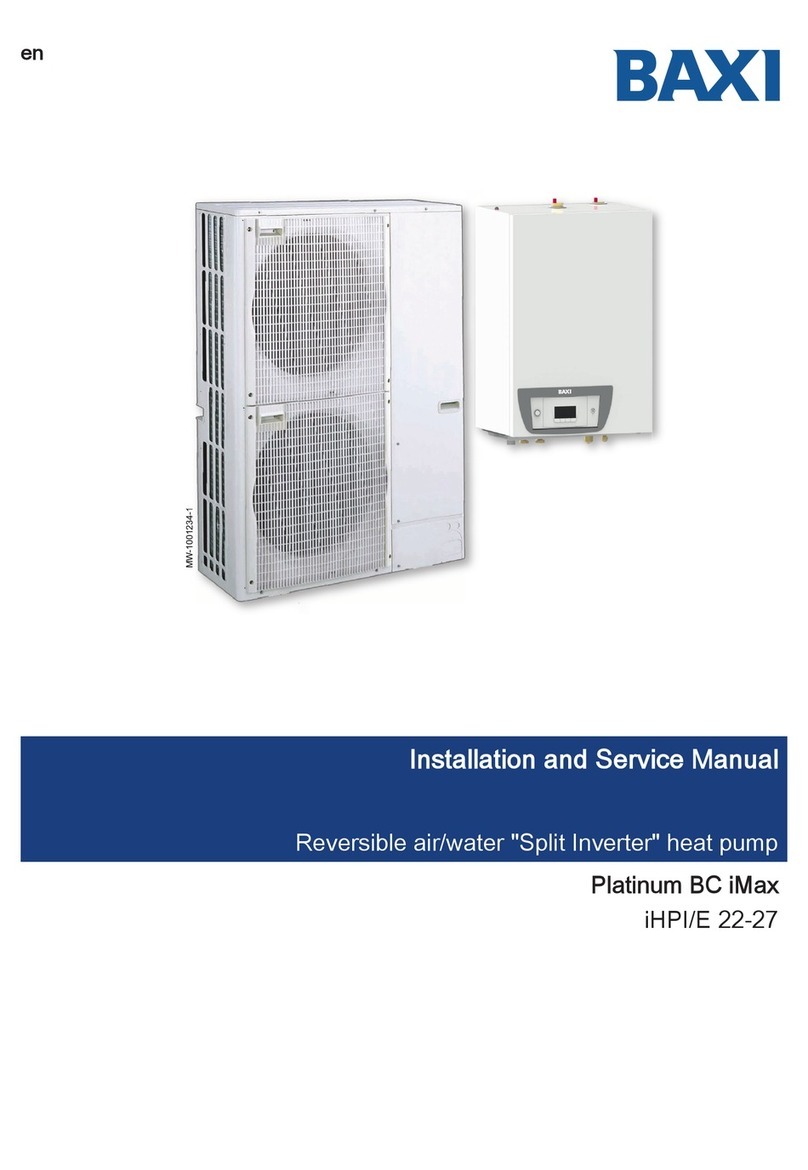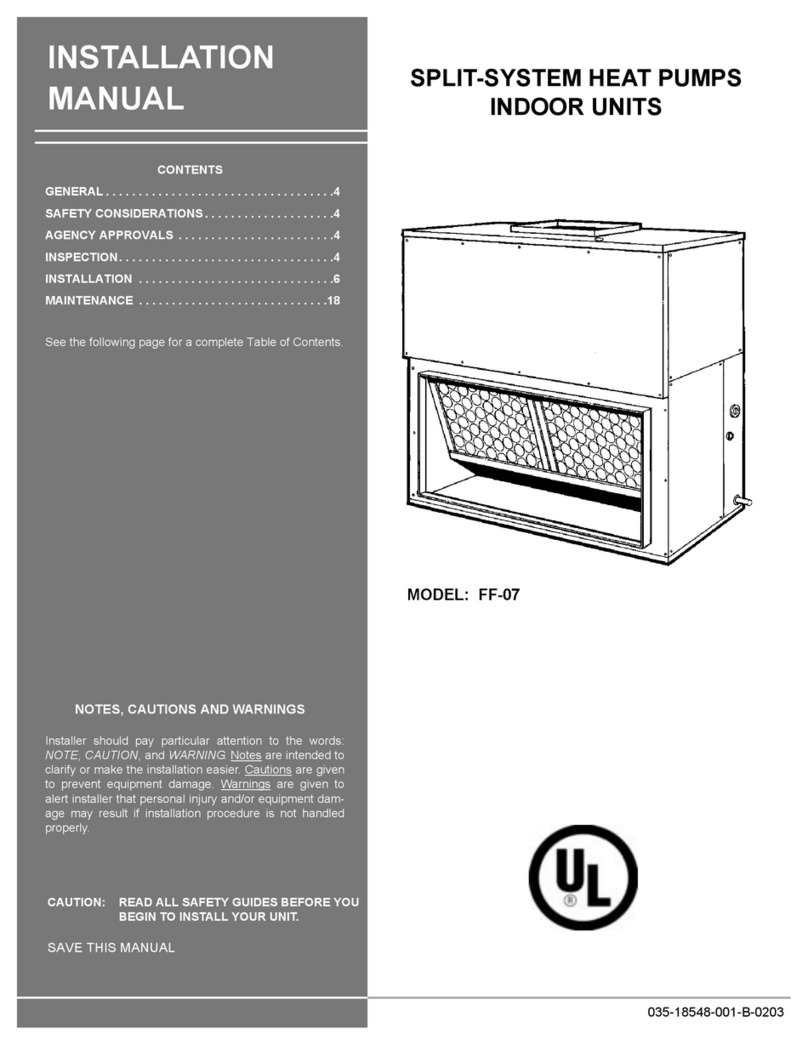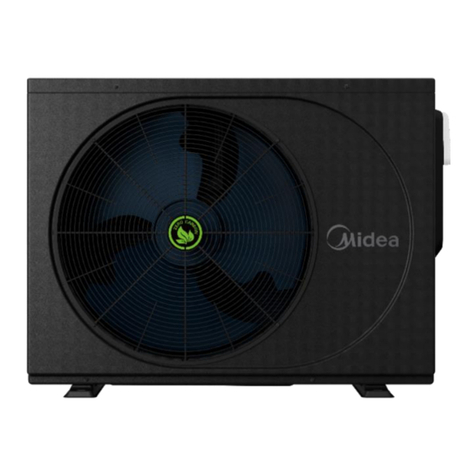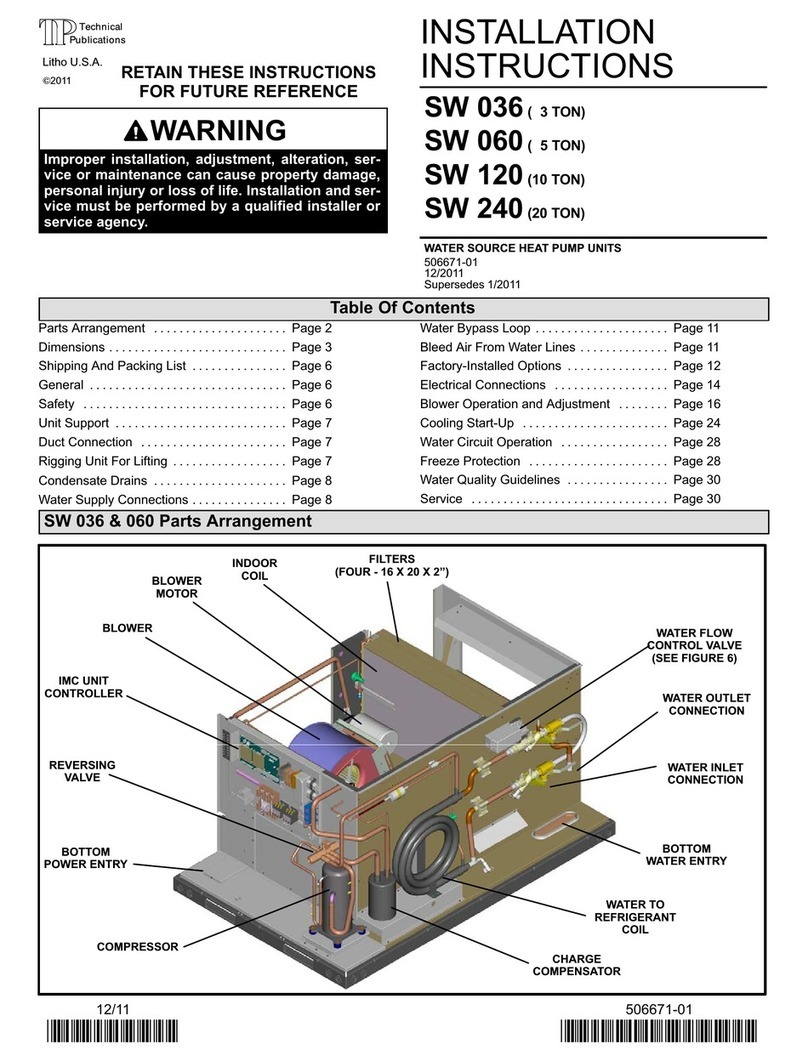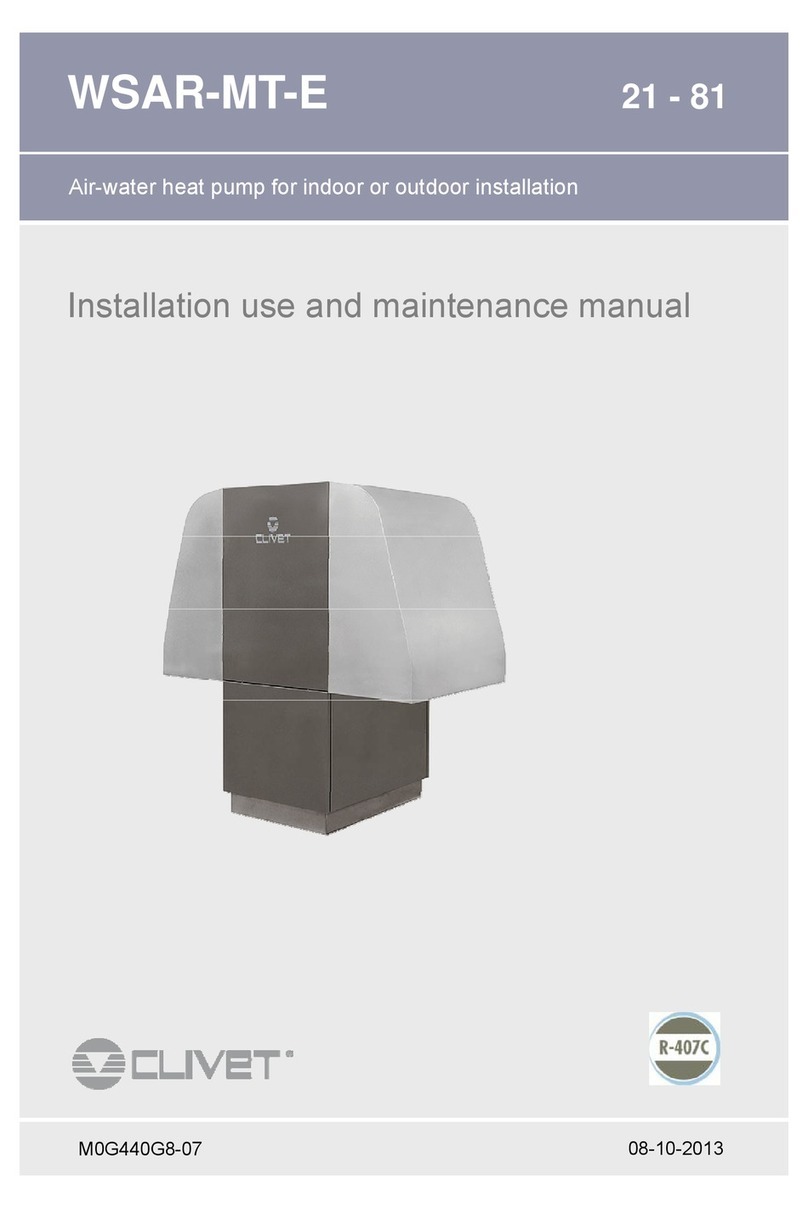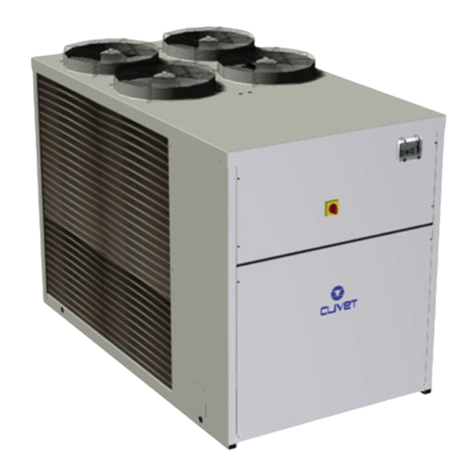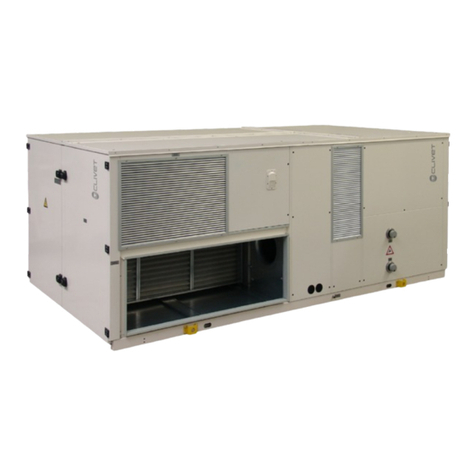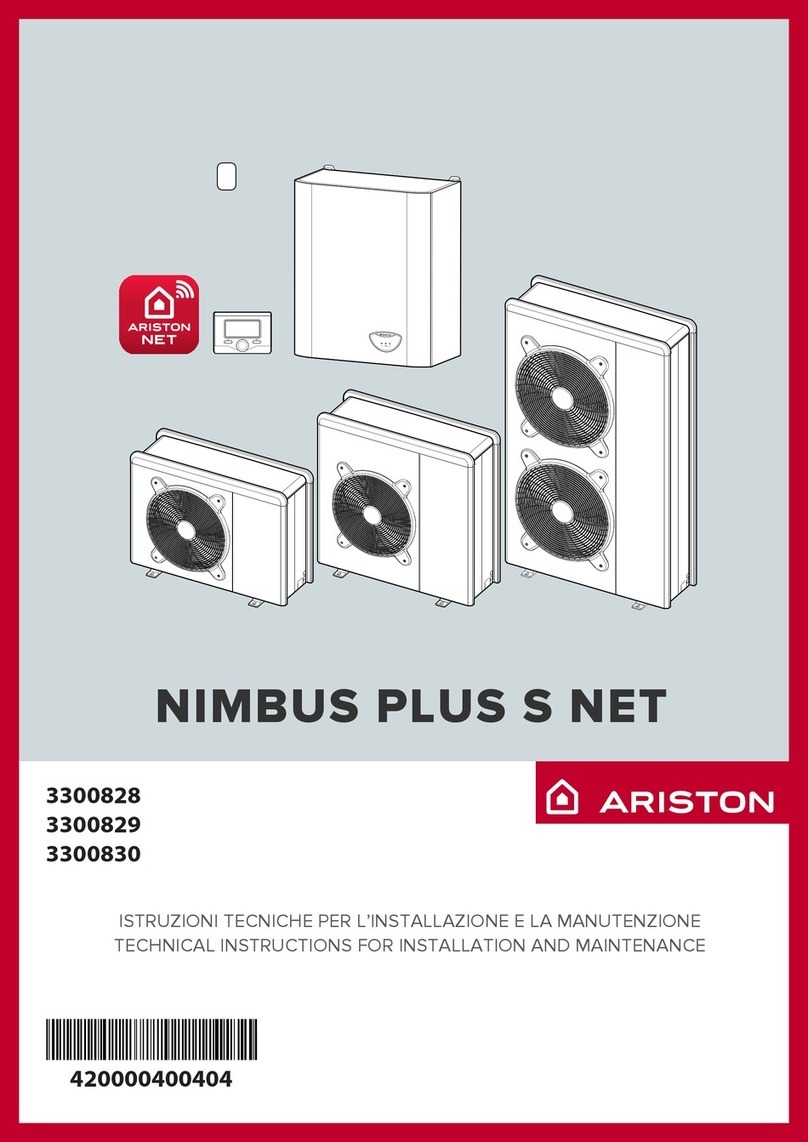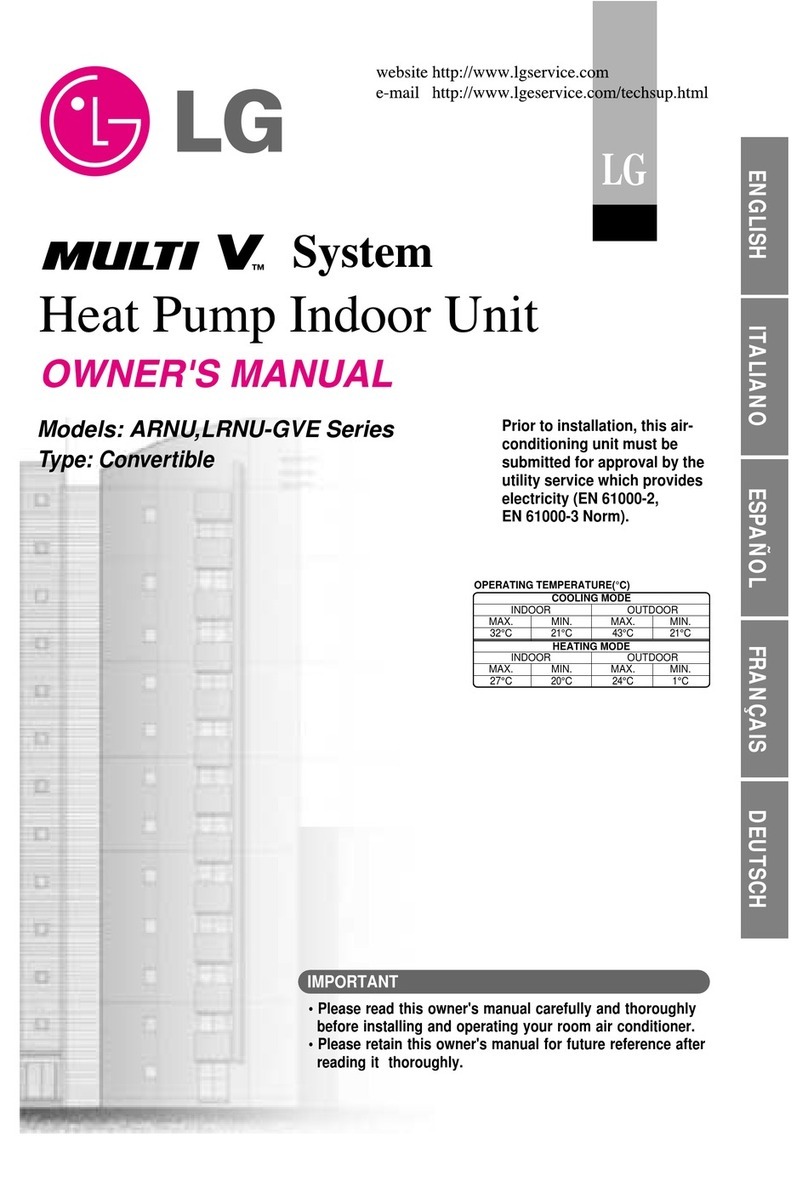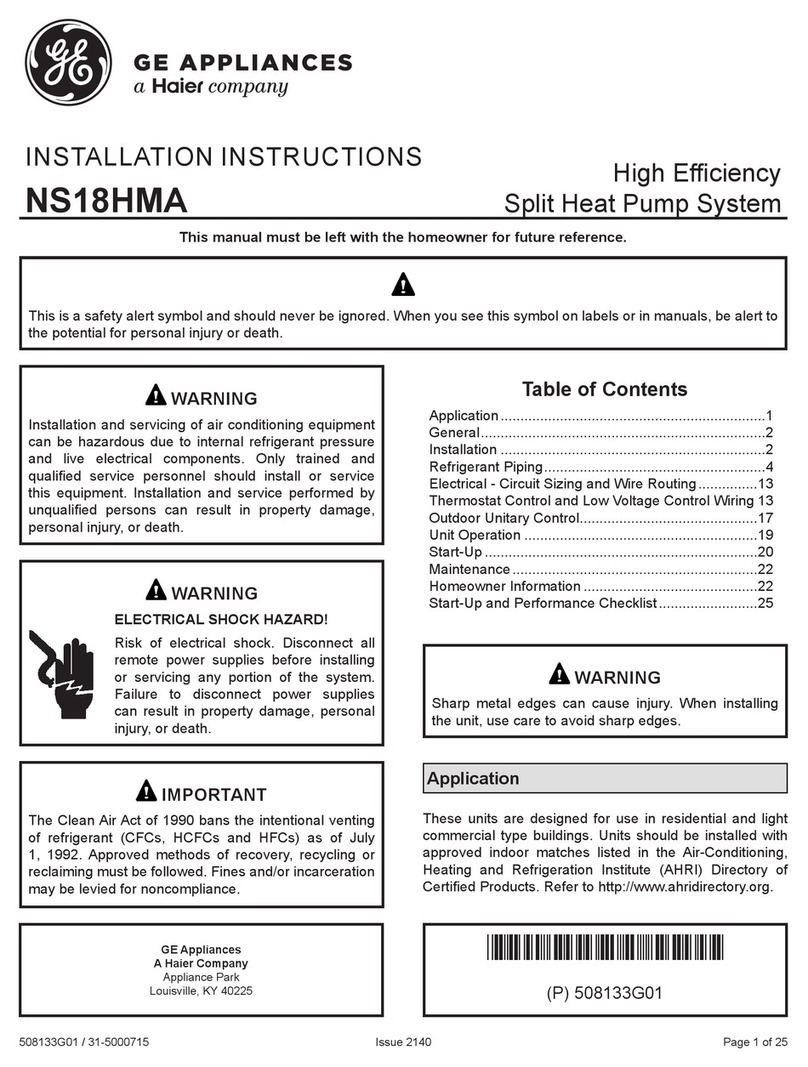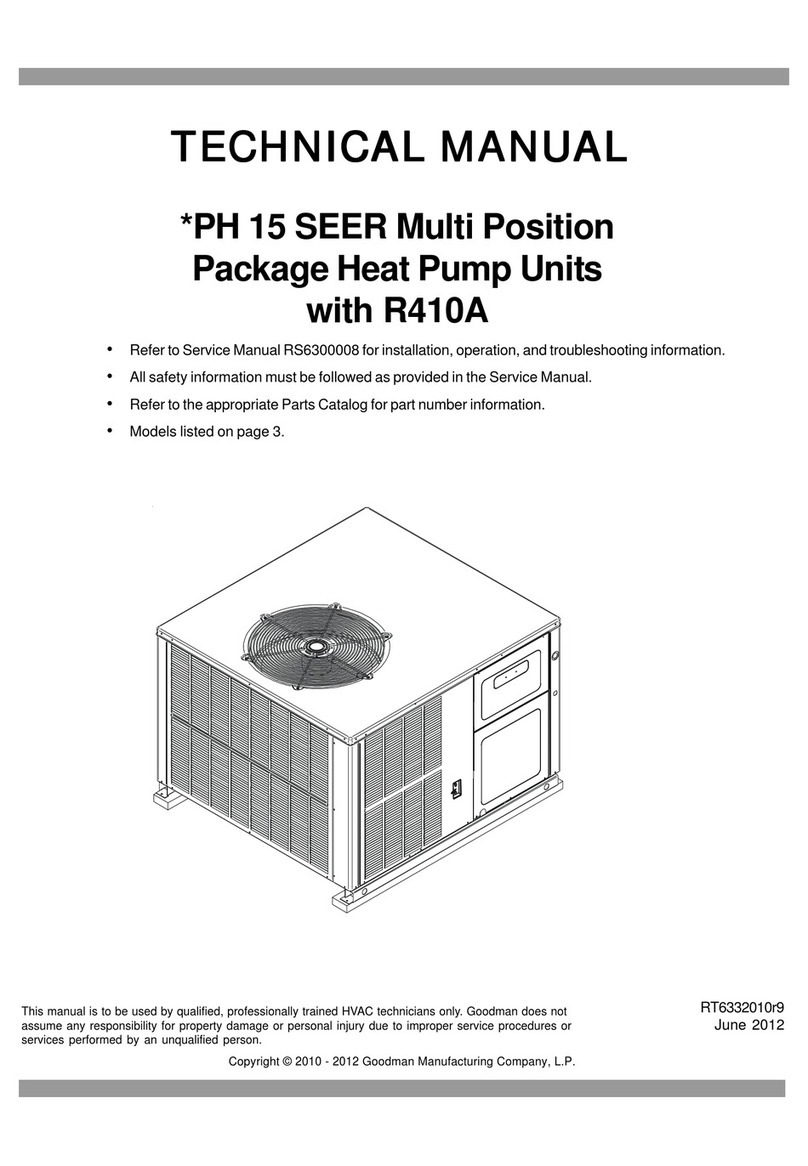
17
Electrical connections
7. Electrical connections
The characteristics of the electrical lines must be
determined by qualified electrica personnel able to
design electrical installations; moreover, the lines must be
in conformity with regulations in force.
The protection devices of the unit power line must be
able to stop all short circuit current, the value must be
determined in accordance with system features.
The power cables and the protection cable section must
be defined in accordance with the characteristics of the
protections adopted.
All electrical operations should be performed by trained
personnel having the necessary qualifications required
by the regulations in force and being informed about the
risks relevant to these activities.
Operate in compliance with safety regulations in force.
7.1 Electrical data
The serial number label reports the unit specific electrical
data, included any electrical accessories.
The electrical data indicated in the technical bulletin
and in the manual refer to the standard unit, accessories
excluded.
The matriculation plate shows the indications foreseen by
the standards, in particular:
Voltage
F.L.A.: full load ampere, absorbed current at maximum
admitted conditions
F.L.I.: full load input, full load power input at max.
admissible condition
Electrical wiringdiagram Nr.
7.2 Connections
1 Refer to the unit electrical diagram (the number of the
diagram is shown on the serial number label).
2 Verify that the electrical supply has characteristics
conforming to the data shown on the serial number
label.
3 Before starting work, ensure the unit is isolated,
unable to be turned on and a safety sign used.
4 Ensure correct earth connection.
5 Ensure cables are suitably protected.
6 Prevent dust, insects or rodents from entering the
electrical panel as they can damage components
and cables.
7 Use the special holes on the bottom of the frame
for the power line inlet. Seal any residual openings
to prevent noise from escaping the compressors
compartment.
8 Fix the cables: if vacated, they may be subject to
tearing.
9 The cables must not touch the compressor and the
refrigerant piping ( they reach high temperatures ).
10 Do not drill holes in the electrical panel.
11 Alternatively, restore the IP rating with watertight
systems.
12 Before power the unit, make sure that all the
protections that were removed during the electrical
connection work have been restored.
7.3 Power supply network requirements
1 The short circuit capacity of the line must be less than
10 kA
2 The units can only be connected to TN, TT
distribution systems
3 Voltage 400-3-50 +/-10%
4 Phase unbalance < 2%
5 Harmonic distortion less than 12% (THDv<12%)
6 Voltage interruptions lasting no longer than 3ms
and with at least 1 s between each one
7 Voltage dips not exceeding 20% of the RMS value,
lasting no longer than a single period (50Hz) and
with at least 1 s between each dip.
8 Leakage current exceeding 10 mA and installation
in accordance with Section 8.2.6 of the standard.
9 Earth cable as specified in the table:
Cross-section of the line
conductors (mm²)
Minimum cross-section of
the protective conductor
(PE) (mm²)
S ≤ 16 S
16 < S ≤ 35 16
S > 35 S/2
7.4 Signals / data lines
Do not exceed the maximum power allowed, which
varies, according to the type of signal.
Lay the cables far from power cables or cables
having a dierent tension and that are able to emit
electromagnetic disturbances.
Do not lay the cable near devices which can generate
electromagnetic interferences.
Do not lay the cables parallel to other cables, cable
crossings are possible, only if laid at 90°.
The type of cable must be suitable for RS-485 serial data
communication.
A 3-pole shielded bus cable is required.
The data transmission bus cable must be verified
according to the type of installation in which it will be
placed and must comply with local standards.
The bus cable must comply with non-prescribed local
electrical standards (e.g. insulation, voltages, flame




















